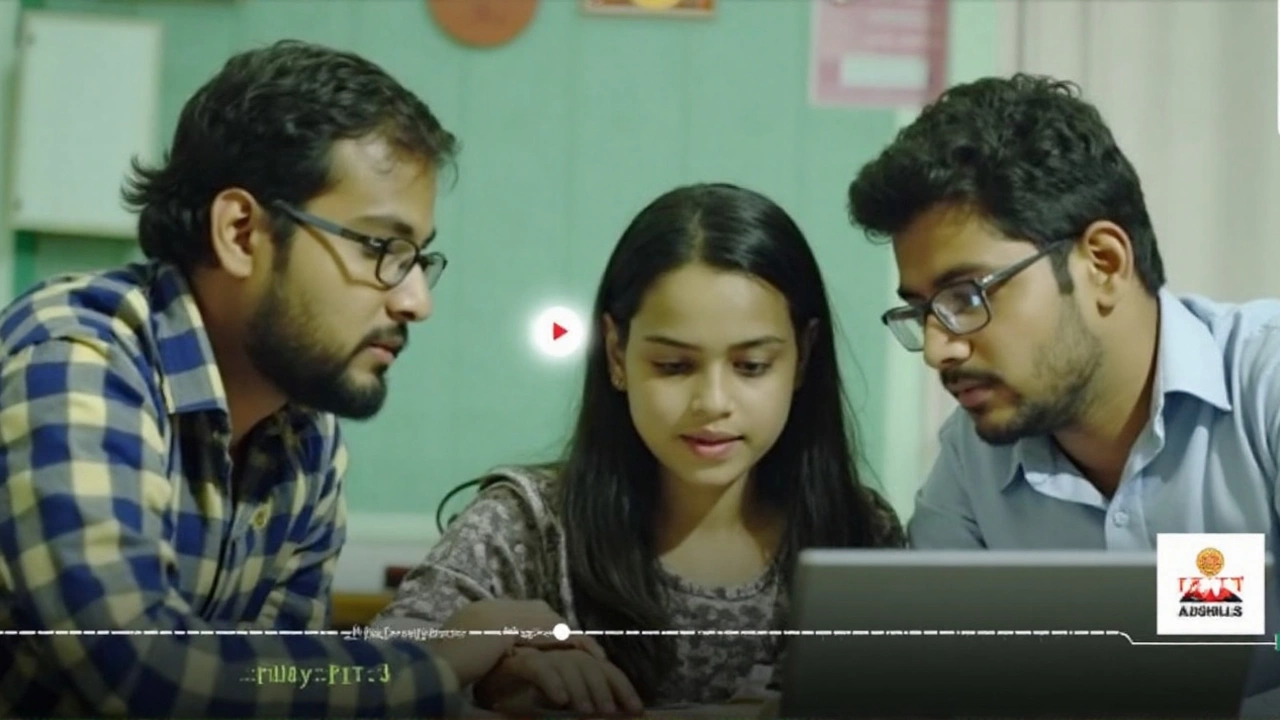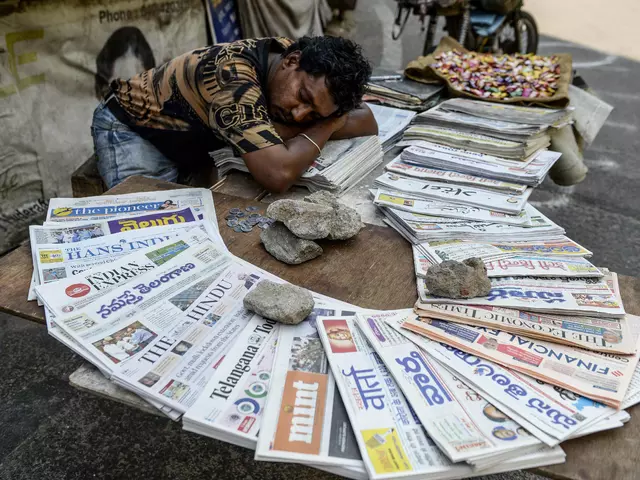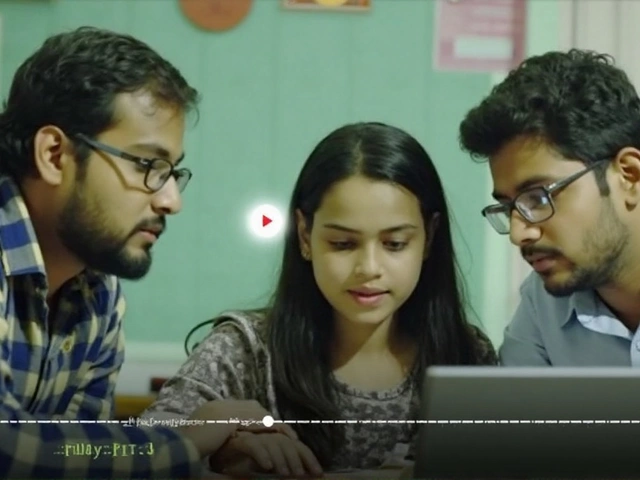IB ACIO 2025: how the three-tier exam works
The Intelligence Bureau isn’t looking for textbook toppers alone. It needs quick thinkers, clear writers, and steady hands under pressure. That’s why the IB ACIO exam pattern 2025 keeps the same three-step funnel used in recent cycles: a speedy objective test, a writing-heavy descriptive paper, and an interview that checks judgment and fit for field and desk roles.
Tier 1 is a computer-based test with 100 multiple-choice questions for 100 marks. You get 60 minutes. Five sections carry equal weight—Current Affairs, General Studies, Quantitative Aptitude, Reasoning, and English—20 questions each. Marking is tight: +1 for a correct answer and −0.25 for a wrong one. Unattempted questions don’t hurt you. If the exam runs in multiple shifts, the ministry typically uses standard CBT safeguards; the official notice will confirm how scores are handled across shifts.
Tier 2 is a one-hour descriptive paper for 50 marks. It focuses on essays, English comprehension, précis writing, and longer analytical answers. This is where structure, clarity, and relevance matter more than fancy language. The IB wants to see if you can turn complex events into clear, actionable notes—exactly the kind of writing intelligence work needs.
Tier 3 is a 100-mark personal interview with Intelligence Bureau officials. It gauges your awareness, composure, and suitability for sensitive work. Knowledge counts, but so do attitude, ethics, and the ability to defend your point without bluster. Language isn’t a trap—candidates are usually free to speak in the language they’re comfortable with—but crisp, honest responses are non-negotiable.
You must qualify each stage in order. Only those who clear Tier 1 sit for Tier 2, and only those who clear Tier 2 get the interview call. Final selection is based on cumulative performance across all three tiers, followed by standard government formalities such as document verification.
Pattern, syllabus focus, scoring and smart prep
Here’s the Tier 1 blueprint at a glance: 100 questions, 100 marks, 60 minutes, five equal sections, negative marking at 0.25 per wrong answer. With less than 40 seconds per question, speed and accuracy trump brute-force attempts. Build a plan for selective skipping—guessing blindly costs more than it gains.
Section-wise scope you should actually prepare for:
- Current Affairs (20 Q): National and international news from the last 6–12 months; Parliament sessions and key bills; major judgments; India’s ties with neighbors; G20/BRICS/SCO updates; defense exercises; space, nuclear and deep-tech milestones; important government reports and indices.
- General Studies (20 Q): Polity (Preamble to basic constitutional bodies), Economy (inflation, fiscal numbers, RBI tools, schemes), History (modern era focus), Geography (India-centric physical and economic), Science and Tech (digital policy, ISRO, DRDO, cyber), internal security basics.
- Quantitative Aptitude (20 Q): Percentages, ratios, averages, profit & loss, CI/SI, time-speed-distance, time & work, number systems, simplification, data interpretation, basic algebra. Keep arithmetic tight; IB tends to ask short, calculative questions.
- Reasoning (20 Q): Syllogisms, coding-decoding, blood relations, directions, analogies, series, seating arrangements (light), inequalities, statement–assumption–conclusion, data sufficiency. Practice clean setups to avoid traps.
- English (20 Q): Spotting errors, sentence improvement, fill in the blanks, one-word substitution, idioms, synonyms/antonyms, para jumbles, and a small RC. Accuracy first—English is easy to overattempt and lose marks on.
Tier 1 scoring strategy that actually works:
- Target 75–85 serious attempts if accuracy is your strength; drop to 65–75 if you’re cleaner but slower. Your safe zone depends on mock performance, not wishful thinking.
- Use a two-pass approach: first sweep easy picks across all sections, then return for medium questions. Leave time-consuming puzzles and heavy DI unless you’re sure.
- Keep a hard stop for guesses: if you cannot bring the options down to two, skip. The −0.25 penalty punishes impatience.
Tier 2 is where many otherwise strong candidates stumble. The paper is one hour for 50 marks, usually split across:
- Essay (20–30 marks): Write on live issues—data protection, cyber security, border management, radicalization, tech and privacy, economic security, federalism, energy policy, or India’s regional diplomacy. Structure like this: a sharp lead, crisp context, two to three evidence-backed arguments, counterpoints, and a pragmatic finish. Keep it 600–800 words if the question doesn’t specify length; tighter if required.
- English comprehension and précis (10–20 marks): Read the passage once without touching the pen. In précis, cut to one-third length and preserve the argument, not the frills. Use your own words; avoid quotes and adjectives.
- Long answer questions (20 marks, often two questions): Short analytical notes on current affairs, economics, or socio-political issues. Use headings, data points, and policy angles. Think of this as a briefing note for a senior officer.
Tier 2 writing checklist:
- Don’t over-introduce. Set context in three lines and move to substance.
- Use examples that travel: a recent Supreme Court judgment, a flagship scheme outcome, a respected index or report. Keep them accurate.
- Balance security with rights; that lens recurs across topics.
- Keep grammar simple. Clean sentences beat ornate prose every time.
The interview (100 marks) isn’t an exam you cram for in a week. It checks maturity under mild stress. Expect themes like your home state, education, work, current events, internal security, and why IB, not another service. If you’ve claimed a skill or hobby, prepare to defend it with specifics—books read, competitions, outcomes. Dress simply, keep your phone off, and arrive early. If you don’t know an answer, say so and offer how you would find it.
On cut-offs and results, the ministry doesn’t publish a formula beyond the stage-wise process. Scores across tiers are combined for the final merit list, and only those who clear Tier 1 are evaluated for Tier 2, and so on. There’s no official word on sectional cut-offs in the current pattern; treat the overall score as the driver unless the notification says otherwise. If multiple shifts occur, watch the notice for any mention of normalization—standard practice in CBTs, but the official document is the final word.
What to carry on the exam day: the admit card printout, a valid photo ID (Aadhaar, Passport, Driving Licence, Voter ID, PAN), a couple of passport photos, and simple stationery for the descriptive paper as specified. Avoid electronic gadgets, smart watches, notes, or calculators unless the admit card explicitly allows them. Follow the reporting time—late entry is rarely accommodated at CBT centers.
How to use the next 10–12 weeks if you’re starting now:
- Phase 1 (Weeks 1–4): Build base. GS from a standard polity/economy source; daily current affairs notes; 1–2 quant and reasoning topics per day; 30 minutes of English practice. One full mock every weekend.
- Phase 2 (Weeks 5–8): Shift to application. Two CBT mocks per week with detailed analysis; timed DI and puzzles; weekly essay and one précis; revise core GS topics; make a one-page sheet per section for formulas and traps.
- Phase 3 (Weeks 9–12): Exam mode. Three mocks per week; focus on accuracy and selective skipping; two essays weekly on security/economy; quick capsules for last 6 months of current affairs; keep sleep and diet steady.
Sources that actually help: a reliable daily newspaper for editorials and national security coverage; PIB releases and ministry summaries for schemes; the Budget and Economic Survey highlights; and your own current-affairs notebook—short, dated, and indexed. For Quant and Reasoning, a standard practice book plus sectional CBTs is enough. Don’t hoard PDFs you won’t read.
Role awareness helps you write and speak better. ACIO-II/Executive is a field-and-desk role—collecting inputs, verifying leads, drafting notes, and supporting operations with clean, concise briefs. That’s why Tier 1 stresses speed across domains, Tier 2 insists on writing and analysis, and the interview checks temperament. If your prep reflects that logic, your answers will, too.
Quick answers to common questions:
- Is there negative marking? Yes, −0.25 per wrong answer in Tier 1.
- Is Tier 2 only in English? The descriptive paper tests English skills, including comprehension and précis. Follow the exact language instructions on the paper.
- Can I choose the interview language? Panels generally allow you to speak in the language you’re comfortable with; be consistent and clear.
- Any sectional cut-off in Tier 1? Not mentioned in the current pattern; check the official notification for updates.
- Will there be score normalization? If the CBT runs in multiple shifts, the official notice will clarify the method.
Bottom line for 2025: the three-tier structure stands, the marking scheme is firm, and writing clarity is your edge. Build speed without sloppiness for Tier 1, write like a briefing officer for Tier 2, and show calm, informed judgment in the interview. That mix is what the Intelligence Bureau actually hires for.











